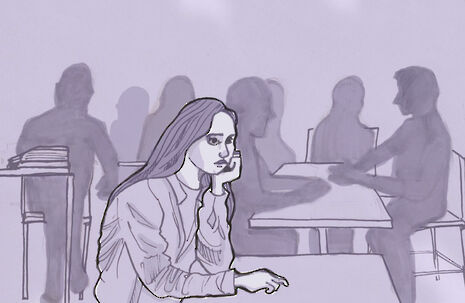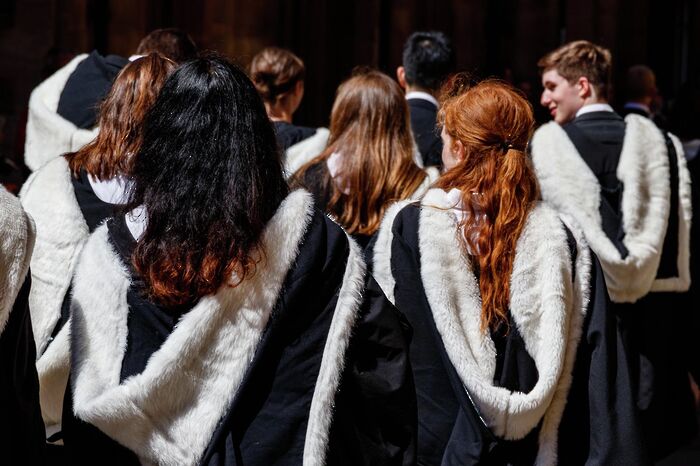40 years of women in most Cambridge colleges, but there’s still a long way to go
Bethan McGinley discusses the discrimination women have faced – and still face – at the University of Cambridge

Content note: This article contains discussion of sexual harassment
For many colleges, this year marks the 40th anniversary of women’s admission to Cambridge. It’s an anniversary that prompts us to reflect on how far we have come as a University, but also how far we still have to go.
The truth is that progress has been slow, hard won, and remains incomplete. Women have actually been present in Cambridge from the start; colleges such as Pembroke and Clare were founded by women and, across the University, women have since occupied domestic roles. However, women weren’t awarded degrees until 1947, almost 60 years after Philippa Fawcett topped the Mathematical Tripos, dispelling the myth that women were somehow less capable than men.
In spite of the places we are now afforded, the legacy of exclusion lives on. Perhaps the most recent example of the precarious position of women at the university is the now reversed decision to readmit Peter Hutchinson, a Trinity Hall fellow found to have sexually harassed 10 students. The fact that Hutchinson was initially allowed back is testament to the continued tradition of dismissing women’s voices. What message does allowing an accused sexual predator back into a college full of female undergraduates send? It tells us that one man is more important than all of the women who spoke out against him, and everyone who would be at risk had he been allowed to return.
We therefore must consider how much has actually changed since male undergraduates used a battering ram on the gates of Newnham in 1921 to celebrate their victory over their female peers who were campaigning for degrees. While today women can have degrees, actions like those of Trinity Hall send the same message as those of almost a century ago: women cannot expect to be valued as members of this university on the same terms as men.
This is compounded by a number of deep-rooted inequalities that continue to exist in the background, somewhat unchallenged. For one, women simply do not do as well as men at Cambridge, with an 8% attainment gap between the number of Firsts achieved by men compared to women. Additionally, the gender pay gap at the staff level highlights the ongoing struggle for equality here. Men occupy 62.8% of the highest paid jobs across the University, and women earn 86p for every £1 a male earns.
This simply gets bleaker when women of colour are considered. It was only in 1996 that the first BAME female lecturer was given a permanent lectureship at the University. Whilst the precise number of BAME female academics at Cambridge is not available, statistics show that, across the UK in 2017, just 25 Black women were recorded as working as professors, out of about 19,000 professors in total. When this is set against the backdrop of Cambridge – in which only 41 out of 552 Cambridge professors surveyed in 2018 were not white and fewer than five were black – we can get a clear picture of how poorly represented BAME female academics are in Cambridge.
Women’s place in sports is another aspect of struggle. The first women’s Boat Race took place between Newnham and Oxford in 1927; the rowers were judged not just on speed but also on ‘style,’ and the women weren’t allowed to row next to one another so as to prevent it being overly competitive. While The Boat Race has come a long way since then, it was only in 2015 that women were able to row on the same part of the river as their male counterparts.
In both Oxford and Cambridge, women are still members of a distinguished ‘Women’s Boat Club,’ whilst men are members of the ‘Boat Club,’ and they are treated as such: in 2018, the Cambridge women’s rowing team pulled out of an international regatta because they found out they were to be housed in a hostel, while the men’s team “were treated to a five-star resort.” In this way, we can see how women have been continually barred from accessing one of the most prized Cambridge traditions.
The place of women at this university has always been under fire. There are still many who question the right of women to have spaces dedicated to their inclusion, such as women’s hour in college gyms. While we should celebrate that women were finally admitted to a number of male colleges forty years ago, we should also acknowledge how far we still have to go.
 News / Clare Hall spent over £500k opposing busway 24 December 2025
News / Clare Hall spent over £500k opposing busway 24 December 2025 News / Caius mourns its tree-mendous loss23 December 2025
News / Caius mourns its tree-mendous loss23 December 2025 Comment / The ‘class’ of Cambridge24 December 2025
Comment / The ‘class’ of Cambridge24 December 2025 Comment / Yes, I’m brown – but I have more important things to say22 December 2025
Comment / Yes, I’m brown – but I have more important things to say22 December 2025 Interviews / Politics, your own way: Tilly Middlehurst on speaking out21 December 2025
Interviews / Politics, your own way: Tilly Middlehurst on speaking out21 December 2025










